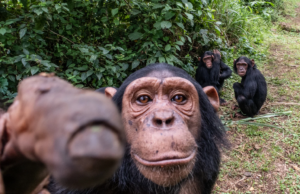GAP Mexico: A Critique of Attacks on Captive Animals

By Francel De la Huerta, Alejandra Estrada and Paulina Bermúdez (GAP Mexico)
On the first trimester of the present year, during february and march, a terrible phenomenon has occurred in zoos around the world. It´s difficult to ignore the fatal attacks that captive animals living in these places have suffered, being disconcerting the intention to inflict upon them harm. One should ask: ¿What led these people to commit such heinous acts?, and assuming that this phenomenon starts being usual in zoos ¿how secure and protected the animals really are?
The 26 of february 2017 in the National Zoological Park of El Salvador the hippopotamus Gustavito died after been attacked days prior with sharp objects, iron bars and rocks. The 28 of february in the Belvédère Zoo in Tunisia a crocodile was attacked by a group of visitors throwing a rock of great size in the enclosure where the animal was; the cause of dead was the rock impacted its head. The 6 of march in the Thoiry Zoo in France the rhinoceros Vince was attacked by a group of individuals who are believed to be poachers. Vince was shot in the head and afterwards his horn was sawed off; in the black market the price for rhinoceros horn is very high. The 13 of march in the Jihlava Zoo in the Czech Republic three kids between the ages of 5 and 8 attacked flamingos kicking and throwing rocks at them causing the dead of one of the flamingos and serious injuries on another.
Amor Ennaifer, a veterinary from the Belvédère Zoo (where the attack to the crocodile occurred), commented on a news item published by the newspaper El Pais the 2nd of march 2017 that the uncivilized behaviour by visitors is usual in the Belvédère Zoo. This begs the question if this kind of behaviour could also be usual in other zoos around the world.
If to prevent all future possible attacks towards animals in zoos it requires in great part for people to be conscious they have to respect them ¿what are zoos doing as an institution to promote this kind of thinking? The visitor takes advantage of the opportunity to meet animals living in captivity in zoos, that otherwise they would have had to encounter in the wild. This opportunity is one zoos exploit and visitors make use of. The exhibition of animals, for the entertainment of the visitor, and that zoos justify as fundamental for their educational purposes ¿is it really useful in the developing of a culture of respect towards animals?
The veterinary Ennaifer, on the news item published by El Pais, said: “We have 150 species in the zoo, we can´t put a guard to each one of them”. If zoos can´t guarantee the safety of the species living in captivity, it seems urgent the need to reconsider the role of the Zoo as an institution.
Sources:
http://www.elmundo.es/sociedad/2017/02/28/58b55119268e3e40478b4780.html
http://cnnespanol.cnn.com/2017/03/03/murio-el-hipopotamo-gustavito-por-negligencia/
http://www.elsalvador.com/articulo/comunidades/hipopotamo-gustavito-unica-victima-zoologico-142220
http://elpais.com/elpais/2017/03/02/actualidad/1488438959_382771.html
http://www.lavanguardia.com/natural/20170303/42507692091/cocodrilo-muerto-golpes-zoo-tunez.html
http://www.elespanol.com/ciencia/ecologia/20170308/199230273_0.html
https://www.elcomercio.com/tendencias/zoologico-republicacheca-ataque-ninos-flamenco.html

 Español
Español
 Português
Português








